
|
|
|
Great Western named passenger services
The 'Bristolian'
The 'Bristolian' high-speed non-stop service between London and Bristol was introduced in 1935 as part of the celebrations to mark the Centenary of the Great Western. Departing from Paddington at 10.00 a.m.,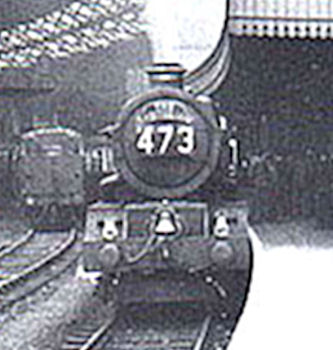 the down journey travelled through Bath, giving an average speed of 67.6 mph for the1¾ hour working. The return journey from Bristol Temple Meads left at 4.30 p.m. and operated over the slightly shorter South Wales and Bristol Direct line through Badminton, but also at the same 1¾ hour timing. These new services represented a saving of 15 minutes over the previous train working.
the down journey travelled through Bath, giving an average speed of 67.6 mph for the1¾ hour working. The return journey from Bristol Temple Meads left at 4.30 p.m. and operated over the slightly shorter South Wales and Bristol Direct line through Badminton, but also at the same 1¾ hour timing. These new services represented a saving of 15 minutes over the previous train working.
The formation of the train was of seven coaches totalling 220 tons. Initially, a 'King' class locomotive was employed on the 'Bristolian', but within a short time, the 'Castle' class were found to be more suitable. The service was suspended at the beginning of the Second World War and was finally restored in 1954, again with the use of 'Kings' later to be replaced by the 'Castles'. By this time, the 'Castle' class had been modified with regard to their steaming capabilities, and maximum speeds of 100 mph were not unknown. At the end of steam, several trains were known to complete the journey in under 94 minutes at an average speed of 75.2 mph.
The 'Cambrian Coast Express'
Introduced in 1927, the 'Cambrian Coast Express' 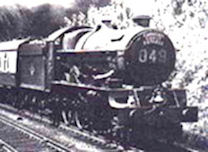 from Paddington to Aberystwyth, can be traced back to an unnamed service which began in 1921. During the inter-war years though, the schedules and timings of the service were frequently altered, unlike other named express trains.
from Paddington to Aberystwyth, can be traced back to an unnamed service which began in 1921. During the inter-war years though, the schedules and timings of the service were frequently altered, unlike other named express trains.
Travelling firstly from Paddington to Birmingham Snow Hill, the locomotive was changed at Wolverhampton or Shrewsbury for a 4-4-0 Cambrian locomotive as most of the lines West of Shrewsbury were banned to locomotives larger than this. These Cambrians were replaced in 1936 by the 4-4-0 'Dukedog' class which in turn were superseded by the 4-6-0 'Manor' class during the Second World War. Usually, the Dukedogs worked double headed.
The 'Cheltenham Flyer'
For many years, 'The Cheltenham Flyer' was known as the fastest train in the world. Introduced in 1923 from Paddington to Cheltenham, the 77.3 mile journey was booked at 75 minutes. Fortunately, the schedule was not too difficult for a 'Saint' or later a 'Castle' locomotive, making the service the fastest in Britain.
In 1929, the timing of the train was cut to 70 minutes, giving a start-to-stop average of 66.2 mph and enabled the GWR to claim the world record. This record was then taken by the the Canadian Pacific for just five months until, in 1931, a further three minutes was cut in the timing of the Flyer. To illustrate the pride within the GWR workforce though, on the first day of the 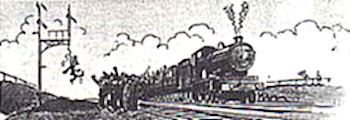 new timing the journey was completed in under an hour, pushing the average to 77.8 mph with a maximum of 89 mph achieved between Mileposts 5 and 3.
new timing the journey was completed in under an hour, pushing the average to 77.8 mph with a maximum of 89 mph achieved between Mileposts 5 and 3.
A year later, the timing was reduced another two minutes, giving a start-to-stop average of 71.4 mph, but again the GWR footplate crew excelled in their job and in June 1932, 'Castle' class number 5006 Tregenna Castle reached Paddington in under 57 minutes - an average of no less than 81.7 mph.
By 1937, the trains record average was marginally beaten by the Coronation class of the LNER, but at the end of the Second World War, faster steam workings were made in North America in addition to the new diesel and electric locomotives in Europe.
The 'Cornish Riviera Express'
In 1904, the Paddington to Penzance service was accelerated to reach its destination in just 7 hours, completing the first 245.6 mile leg to Plymouth at an average speed of over 55 mph. In response to the marked boost in traffic, the Railway Magazine organized a competition for a name for the service. Over 1,200 entries were sent in, two of which actually chose 'Cornish Riviera Limited'. Sir James Inglis, General Manager of the 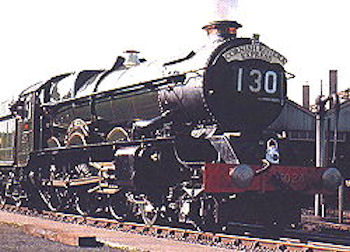 Great Western, selected 'The Riviera Express' but by the time the name was adopted officially, it was changed to 'Cornish Riviera', although at different times in its use, both 'Express' and 'Limited' have been used as a suffix.
Great Western, selected 'The Riviera Express' but by the time the name was adopted officially, it was changed to 'Cornish Riviera', although at different times in its use, both 'Express' and 'Limited' have been used as a suffix.
In the summer of 1906, a new route through Westbury was opened and the train began to operate throughout the year. In addition, the departure time from Paddington was altered from 10.10 am to 10.30 am, giving the service another nickname as 'The 10.30 Limited'. Just prior to the First World War, the train arrived in Plymouth in 4 hours 10 minutes, completing the run to Penzance in 6½ hours. Up to three slip portions of the train were carried; at Westbury, Exeter and also Taunton for working on to North Devon.
In the late 1920's, the King class took over the train from the Castle class, giving the run to Plymouth a time of 4 hours with Penzance being reached in 6 hours 20 minutes. King locomotives were barred from crossing the Royal Albert Bridge at Saltash, and therefore a Castle class engine would take over the train at Devonport.
After the disappearance of steam, the service maintained its popularity transporting residents of London and the Home Counties to the South-West coastal resorts.
The 'Torbay Express'
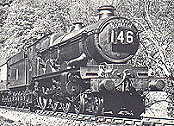
Torbay was always a popular destination for passengers throughout the year and had its own through service from Paddington well before World War 1. The departure time of 12 noon from London was unusual in that other West of England trains left at 30 minutes past the hour.
By the mid-1930's, trains left Paddington and Torquay at the same time. The 'Express' reached Torquay in 3½ hours, with a 5-minute break at Exeter, calling at Paignton, Churston and Brixham. This latter branch line working resulted in the unusual sight of a King class locomotive on a single-track line.
Return to top of page
Copyright © by John Daniel 2013.
